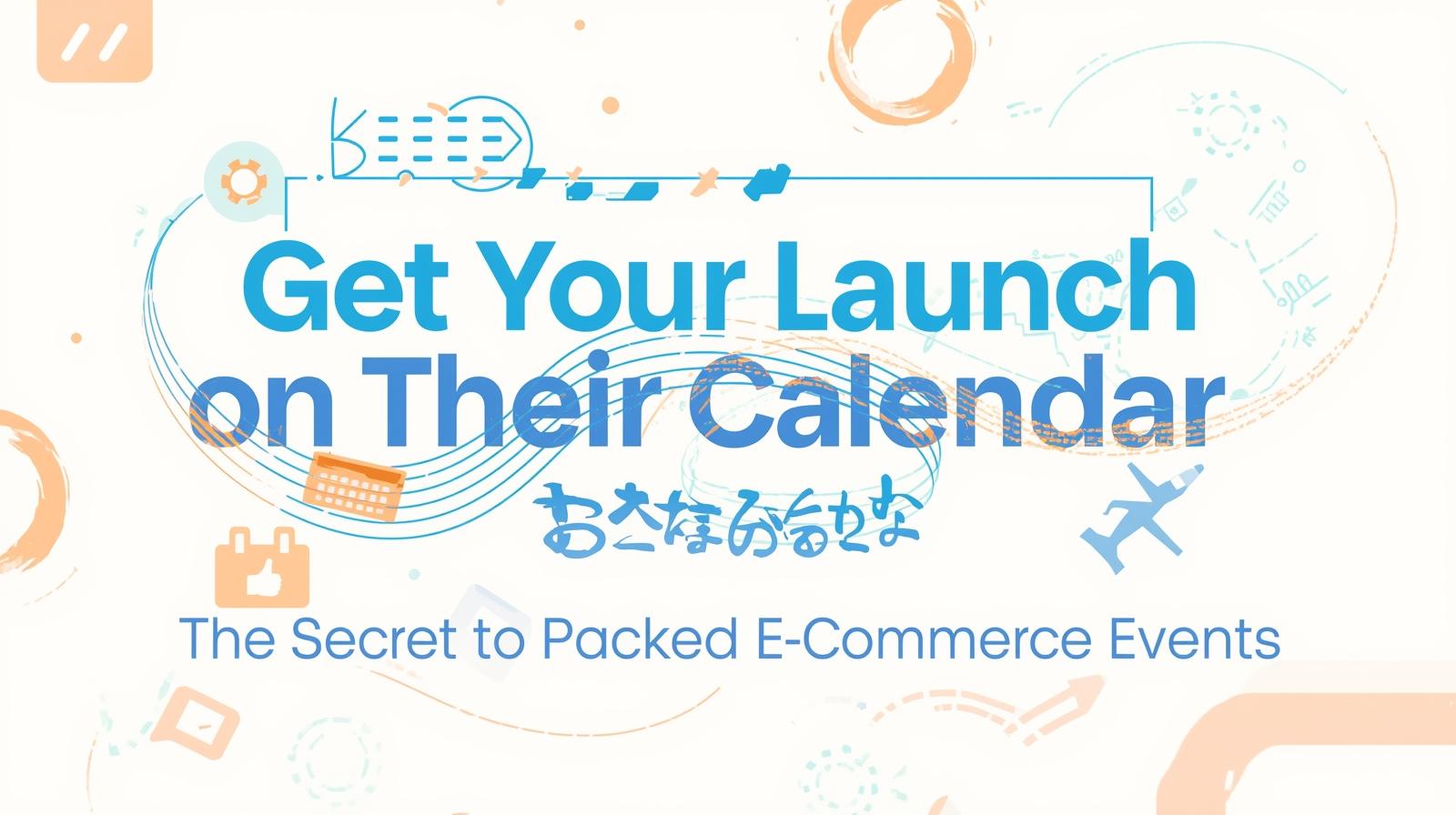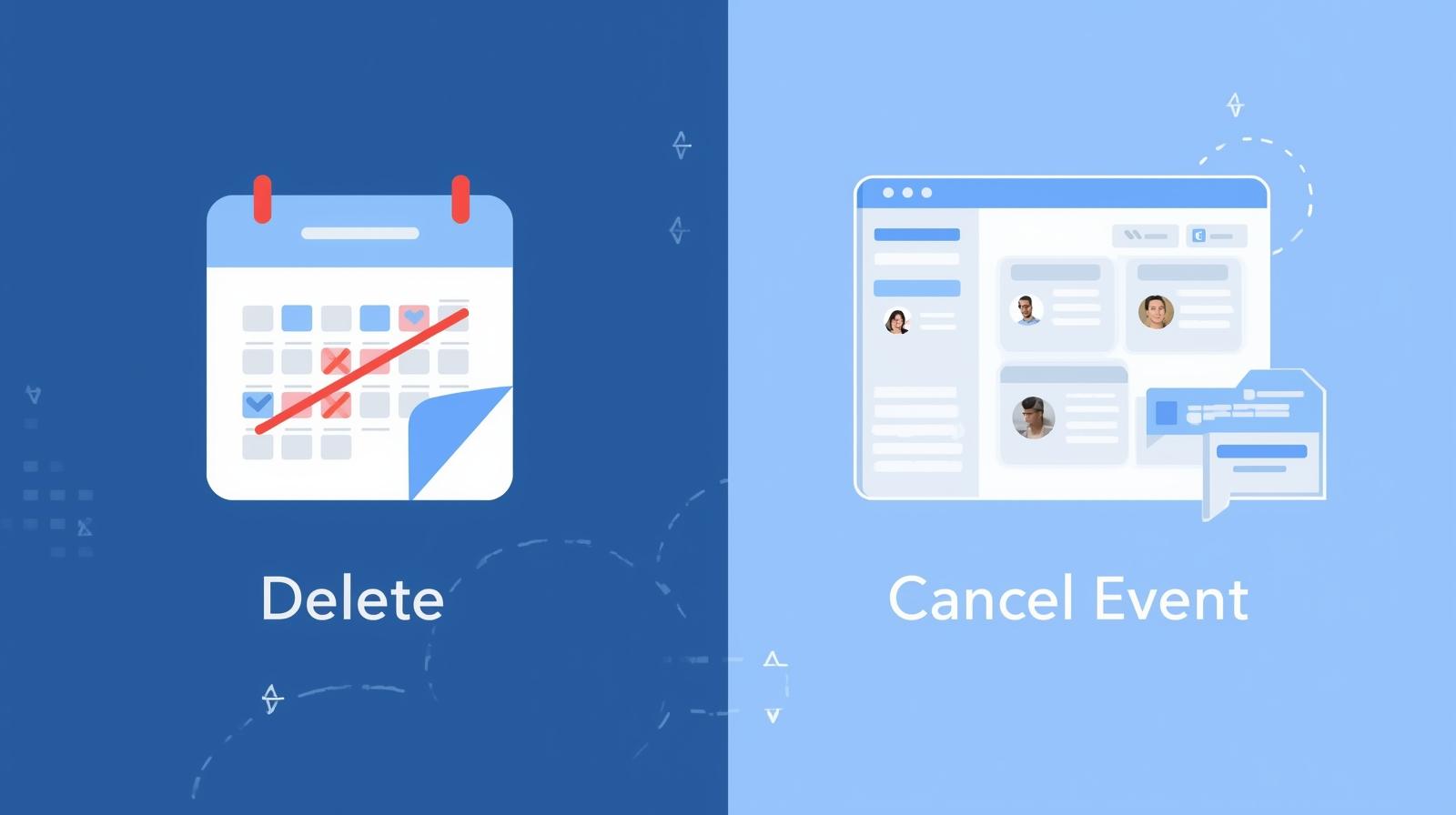- Email: [email protected]
- phone: +44 (0) 203 916 5117
12 Sep

Get Your Launch on Their Calendar: The Secret to Packed E-Commerce Events
Every e-commerce events brand dreams of a product launch that feels electric buzzing with anticipation, brimming with attendees, and resulting in instant conversions. Yet the reality is often less glamorous: beautifully crafted emails ignored, low webinar attendance, or live event audiences that fall short of expectations.
The culprit? Noise. With overflowing inboxes, endless notifications, and competing marketing campaigns, your audience is already distracted. Getting them to not only register but also show up requires more than another reminder email.
The answer lies in a powerful but underutilized strategy: calendar invites. Instead of asking your audience to remember, you make sure your launch takes its rightful place in their schedule.
With Let’s Calendar, e-commerce teams can send bulk calendar invites at scale discreetly, with personalization, and across all major platforms making sure your event doesn’t just generate sign-ups, but real participation.
Why Calendar Invites Work for E-Commerce
1. They Cut Through the Noise
A calendar notification isn’t just another piece of content it’s a time-based commitment. By placing your event directly into someone’s Google, Outlook, or Apple Calendar, you bypass the clutter of inboxes and put your launch front and center in their daily routine.
2. They Drive Higher Attendance Rates
Research across event marketing shows a sharp difference in attendance between registrants who add an event to their calendar versus those who don’t. It’s the built-in reminder system whether it’s a nudge 10 minutes before or a ping an hour prior that ensures fewer no-shows.
3. They Reinforce Professionalism & Exclusivity
A personalized calendar invite feels more official than a standard email blast. For high-value product launches, VIP previews, or influencer first campaigns, calendar integration shows respect for your invitee’s time.
The Calendar vs. Email Debate: A Clear Winner
|
Factor |
Traditional Email |
Calendar Invite |
|
Visibility |
May get lost in inbox |
Directly on the user’s calendar |
|
Engagement |
Passive (open/read) |
Active (accept/decline) |
|
Reminders |
Manual follow-up needed |
Automatic system-driven alerts |
|
Scalability |
Bulk send = impersonal |
Bulk send + personalization possible |
|
Perception |
Marketing message |
Time commitment |
Emails are important for storytelling and hype. But when it comes to driving action at a specific time, calendar invites win every time.
Why E-Commerce Brands Should Prioritize Calendar Invites
Product launches in e-commerce are high-stakes moments. A single campaign can determine quarterly revenue, brand perception, and future loyalty. Yet many brands continue to rely on generic email reminders.
Here’s why adding a calendar-first strategy can transform outcomes:
- Scarcity & urgency: When a flash sale or drop is scheduled, an addevent button creates urgency by putting it directly into the buyer’s plan.
- Global time zones: Customers across continents often miss launches due to misaligned timing. Calendar invites automatically adjust to local time.
- Multi-channel reach: From live video on YouTube to hybrid launch parties, a universal “add calendar to event” link ensures consistency across touchpoints.
- Engagement tracking: Tools like Let’s Calendar allow brands to track acceptance rates, so you know which segments are most responsive.
How Let’s Calendar Powers Seamless Event Attendance
Let’s Calendar is built for scale perfect for brands running multiple seasonal campaigns, influencer activations, or big-bang launches. Unlike traditional invite software that feels clunky or outdated, Let’s Calendar is modern, discreet, and flexible.
Key Differentiators:
- Send Mass Calendar Invites: Reach thousands without flooding inboxes.
- 1:1 Personalization: Add unique details like VIP access codes or private links.
- Cross-Platform Compatibility: Whether attendees use Google, Outlook, Apple, or other calendar apps for iPhone, invites work flawlessly.
- Bulk Campaign Management: Create, edit, and track campaigns in one place.
- Real-Time Tracking: See who’s accepted, declined, or hasn’t responded.
This blend of scale, personalization, and tracking is what makes Let’s Calendar stand out among organizational tools.
Step-by-Step: Adding Events with Let’s Calendar
One of the most common concerns organizers face is, “How do we make sure our audience can add the event to their calendar easily?” Let’s Calendar simplifies the process with a few clear steps:
- Set Up Your Event Campaign
Add event details (title, description, date, time, timezone, location/meeting link). Configure reminders and recurring rules if needed. - Connect Your Sending Mailbox
Link your Gmail/Google Workspace or Outlook/Microsoft 365 account to send professional, deliverable invites. - Import & Segment Your Audience
Upload contacts manually or via CSV. Segment lists based on customer type, region, or product interest. - Enable “Add to Calendar”
Generate a universal link/button for Google, Outlook, and Apple. This ensures anyone can save your launch in one click. - Send & Track
Push invites directly, or embed “add to event” buttons in landing pages or promotional emails. Then track responses in real time.
This ensures your launch is not just noticed but scheduled and remembered.
Beyond Attendance: Measuring Impact
Getting people to show up is step one. But for e-commerce, the real question is: Did the event drive action?
With Let’s Calendar, you can go beyond attendance tracking to evaluate:
- Engagement by segment: Which audience group responded best to calendar invites?
- Conversion triggers: Did calendar attendees convert faster or spend more than those who only got emails?
- No-show rates: How did mass meeting invites compare to personalized invites?
This data helps refine future campaigns, ensuring every launch gets stronger.
Practical Scenarios Where Calendar Invites Shine
1. Fashion Brand Drops
Imagine a clothing label announcing a new seasonal collection. By sending mass calendar invites in Gmail directly to loyal subscribers, the brand ensures its digital runway show doesn’t just get clicks but attendance.
2. Tech Product Launches
When unveiling a new gadget, brands often juggle global press, influencers, and customers. With Let’s Calendar, organizers can manage bulk meeting invites across time zones while keeping details discreet.
3. Webinar-Led Launch Campaigns
For brands using educational webinars as part of their go-to-market strategy, adding an “add calendar to event” option boosts attendance and provides insights into event management features that drive ROI.
Where Calendar Invites Make the Biggest Impact
- With Let’s Calendar, brands can send mass calendar invites at scale while still adding personalization.
- For teams planning launches across multiple cities, sending mass meeting invites helps unify communication.
- Many startups struggle with managing mass calendar invites in Gmail, but Let’s Calendar simplifies the process.
- E-commerce leaders who use bulk meeting invite campaigns see improved engagement rates compared to email-only strategies.
- Unlike traditional invite software, Let’s Calendar combines discretion with personalization, making it one of the most practical organizational tools today.
- For teams comparing platforms, the event management features in Let’s Calendar stand out by blending scale with personalization.
- Whether using desktop or calendar apps for iPhone, customers receive a seamless event reminder experience.
Final Thoughts: From Empty Seats to Full Houses
Packed e-commerce events launches aren’t about luck, they’re about strategy. Emails tell the story, but calendar invites lock in the commitment.
By using Let’s Calendar, brands can not only send bulk invites discreetly but also personalize at scale, track attendance, and ensure launches land directly in the schedules of those who matter most.
If you’re tired of empty webinar rooms, missed drops, or low live attendance, the solution isn’t to shout louder, it’s to get your event on their calendar.








Recent Comments